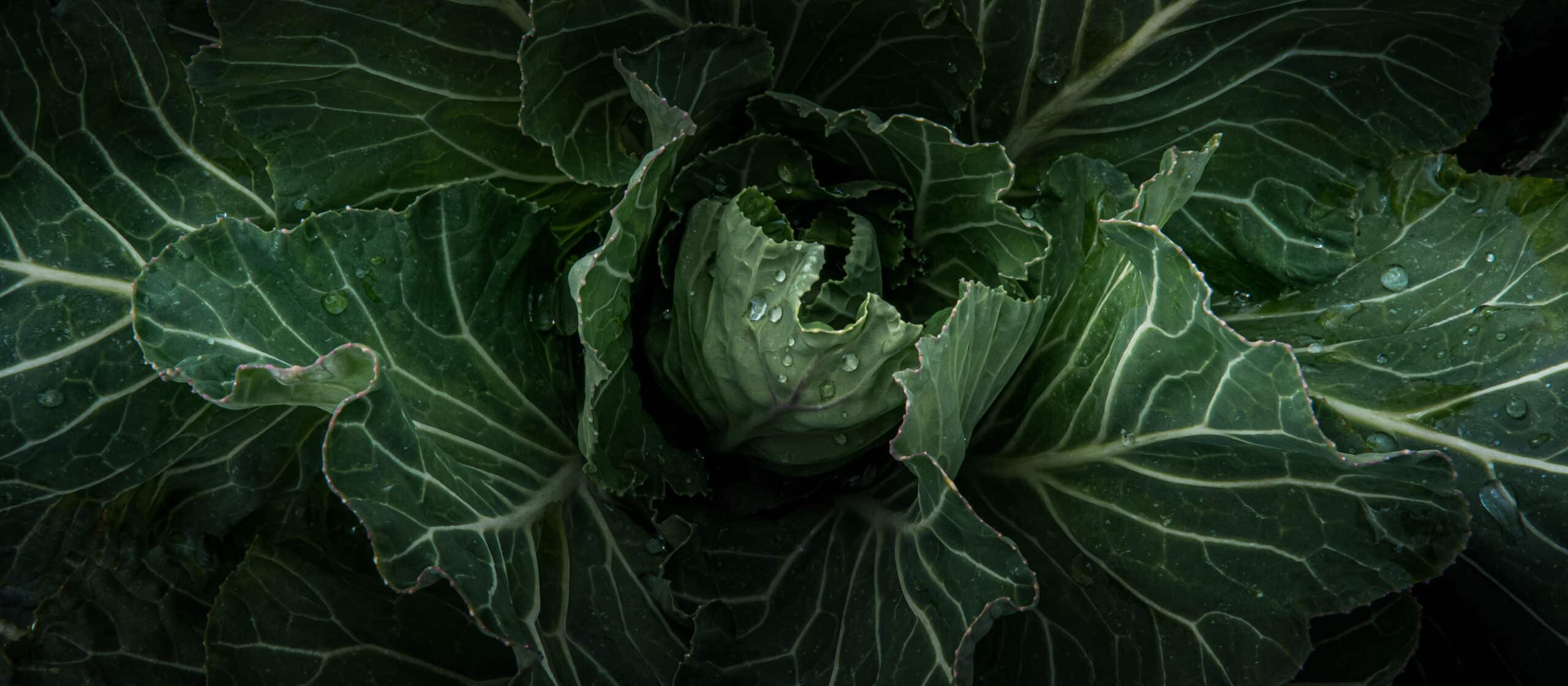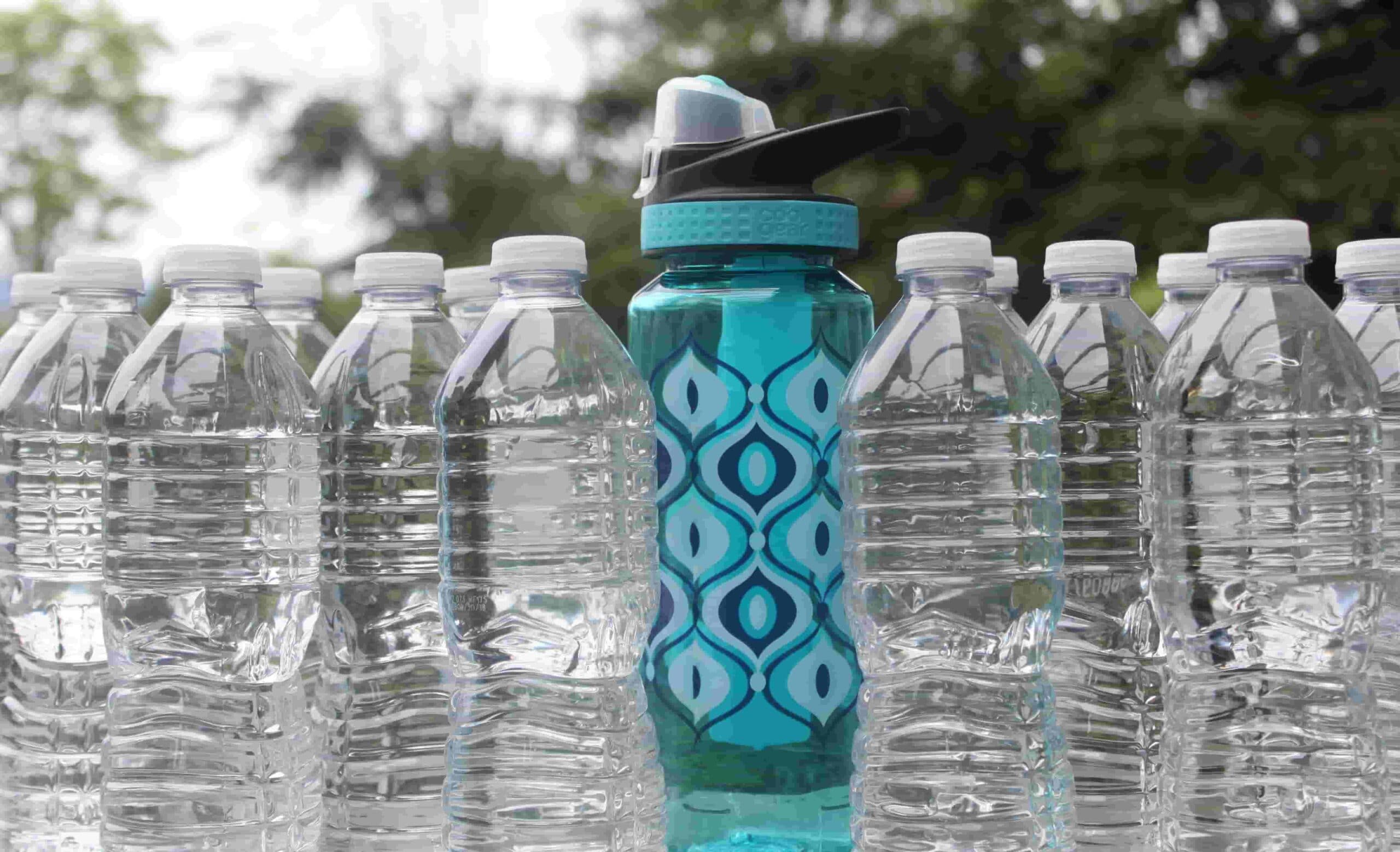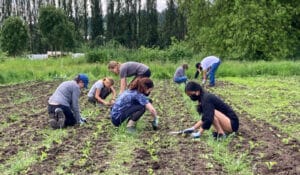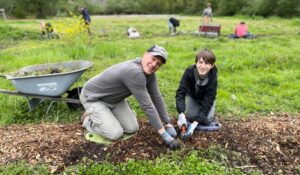
Celebrate Earth Day Every Day – Reduce Plastic Pollution!
Celebrate Earth Day Every Day – Reduce Plastic Pollution!
- posted on: April 22, 2018
- posted by: 21 Acres
"*" indicates required fields

The 2018 Earth Day campaign—determined by the Earth Day Network, the nonprofit behind Earth Day—was ‘End Plastic Pollution.’ With the health of our planet and the well-being of future generations at stake, it isn’t enough to focus on plastic pollution just one day out of the year. At 21 Acres we celebrate Earth Day every day… and we urge you to do the same!

Since its invention in 1907, approximately 9.1 billion tons of plastic has been produced, resulting in around 6.3 billion tons of plastic waste. About 12 percent of that waste has been incinerated (incineration is the only way to permanently dispose of plastic, however this method of disposal is far from ideal, as the process releases carbon dioxide and toxins into the atmosphere); 9 percent has been recycled; and 60 percent — about 4.9 billion tons — lies in landfills or scattered in the environment. Plastics are not biodegradable, meaning they cannot be dissolved safely back into the environment and take a long time to decompose. While biodegradable food containers take around 2 to 12 weeks to decompose, plastic containers can take 400+ years. Our plastic waste isn’t going anywhere fast.
Plastic pollution poses various hazards to wildlife and marine life is especially vulnerable—we’ve all seen pictures of seagulls, turtles, and other marine animals entangled in plastic bags or soda rings. Nearly 90% of the debris in our oceans is plastic and scientists estimate that over 250 marine species have been impacted by plastic pollution. The threat posed by plastic waste does not abate as it decomposes. As they are broken down, plastics leach toxic chemicals into the environment (when decomposing in a body of water these chemicals are absorbed by marine life, when decomposing in a landfill they seep into the soil and groundwater). These chemicals are dangerous not only to plant and animal life, but to humans. Research has linked exposure to these toxic substances to a variety of health problems, including: impaired fertility, birth defects, hormonal imbalances, early puberty, immune system abnormalities, diabetes, and cancer. Clearly, plastic pollution is a problem we cannot afford to ignore.
The enormous scale of this problem may seem (and, certainly, is) daunting, but there is good news– progress is being made. Innovative green leaders around the world are constantly finding new ways to deal with plastic waste in our environment, by collecting it and transforming it into something useful.
Clothing and Shoes
Eco-friendly businesses around the globe have been working to transform plastic trash into clothing (for brevity’s safe we’ll just focus on those located in the U.S.)! Companies like Thread, Repreve, Atayne, Last Bottle Clothing, and Seattle-based Nube9 use recycled, post-consumer plastic water bottles to make high-quality sportswear and fashion apparel. Rethink Fabrics, another Seattle company turning plastic bottles into clothing, even includes a bottle count with each garment so that customers can easily identify how many plastic bottles were used in its creation! The New York company, Bionic Yarn, uses coastal and marine plastic to create fully traceable, high-grade textiles and polymers that are used by several iconic brands, including Chanel, Polo Ralph Lauren, and H&M. Equally iconic, Adidas has partnered with the environmental group, Parley for the Oceans, to create a line of high-performance sportswear using up-cycled waste from beaches and coastal communities, thus intercepting plastic waste before it reaches the ocean (the Ultraboost running shoe pictured on this page is an Adidas Parley product). Check out the Clothing & Shoes page of our green directory for more examples of environmentally conscious clothing companies.
Building Materials
Plastic waste can also be up-cycled in building materials. In 1996, a decking company called Trex introduced a composite decking as an alternative to wood lumber. Trex products are made from reclaimed wood and recycled plastics from a number of sources – including plastic shopping bags, Zilpoc bags, garment bags, and newspaper sleeves. The average 500-square-foot composite Trex deck contains 140,000 plastic bags! Henry Miller, a 2007 graduate of the Master of Architecture program at Rensselaer Polytechnic University, recently developed a way to granulate plastic bags and mix them with concrete to form bricks. Miller’s material blend not only keeps the plastic used out of landfills, it eliminates the need to include the mined aggregate typically used in concrete mixtures. In Seattle, the eco-friendly company, Arqlite, uses recycled plastics to make construction materials for various civil engineering projects.
Roads
In the early 1990s, an entrepreneur in India named Ahmed Khan founded K.K. Plastic Waste Management—a company which reuses plastic waste for the asphalting or roads. In Scotland, Toby McCartney’s company, MacRebur, has developed a similar way of using plastic waste in asphalt. Roads made using Khan and McCartneys’ methods not only help reduce plastic waste, they have been shown to be more durable and longer-lasting than traditional roads.
CNTs
Scientists at the University of Adelaide, in Australia, have found a way to transform plastic bags into Carbon Nanotube Membranes (or CNTs). CNTs are the strongest, lightest, and most conductive material currently in existence; they are 200 times stronger than steel, yet 6 times lighter and more elastic. CNTs are currently used in the production of electronics, wind turbines, long-lasting batteries, sensing devices, and more. However, their unique and valuable properties pose exciting possibilities for future applications in filtration, sensing devices, energy storage, and biomedical innovations. Learn more here.
Fuel
Researchers at various universities and institutes (including the University of Illinois, the University of California, Irvine, and the Shanghai Institute of Organic Chemistry) have been developing ways to turn plastic waste into fuel. The team in Illinois found a way to turn recycled grocery bags into diesel fuel and other petroleum products; their process recovers almost 80% of the petroleum that makes up plastic bags, from which they were able to produce various different types of fuel (including gasoline, diesel, and biodiesel). The team from California, in partnership with researchers from the SIOC, created a method of degrading plastic waste that is milder and more efficient than previous processes. Learn more about “plastics-to-fuel.”
All of the inspiring organizations, businesses, and people mentioned above demonstrate how human ingenuity can be used to enact positive change. But, not all of us are able to spend our days transforming trash into treasure. So, what can you, as an individual, do to help?
Small changes in behavior, made by enough people, can have a huge impact! Over a billion people celebrate Earth Day every year—can you imagine the kind of change we would see if every one of us committed to making small changes in our daily behavior to reduce plastic pollution? Every one of us has contributed, mostly unknowingly, to the problem of plastic pollution… and every one of us can help reduce plastic pollution, simply by making small changes in our everyday life.
Here are 3 easy things you can do to reduce your plastic footprint:
1) Say “no” to plastic products whenever possible to cut down on your plastic consumption. Take-out orders often come with plastic utensils that never end up being used; when placing your order you can request these be left out. Avoid using plastic straws and coffee stirrers. Did you know Seattle is the first major U.S. city to ban the use of plastic straws? This is largely thanks to the environmental group, Lonely Whale, whom started the Strawless in Seattle campaign.
2) Substitute single-use plastics (i.e. plastics you only use once, like water bottles or plastic grocery bags) with reusable alternatives! Buy a canvass tote bag to carry your groceries (many stores sell reusable bags in or near their checkout line) and invest in a stainless steel water bottle or Nalgene (Nalgene products are reusable and BPA-free).
3) Recycle, recycle, recycle! Oftentimes, people end up throwing things away simply because they did not realize they could be recycled. If you’re not sure whether something can be recycled or where, look it up! King County’s Solid Waste Division has an online directory that helps you locate nearby businesses and organizations that accept a wide variety of items for reuse, recycling, and proper disposal. The King County Solid Waste Division also has a campaign, called Bag Your Bags, which encourages people to return their plastic shopping bags and film to local grocery stores for reuse. Here’s a list of stores taking part in the Bag Your Bags campaign.
If you want to take things a step further, follow these steps on the Earth Day Network website to learn more about what you, specifically, can do to help reduce plastic pollution.
The year 2020 marks the 50th anniversary of the first ever Earth Day. To find out about the Earth Day Network’s goals and activities leading up to this milestone, visit earthday.org/earthday/countdown-to-2020/.











 back to blog overview
back to blog overview







